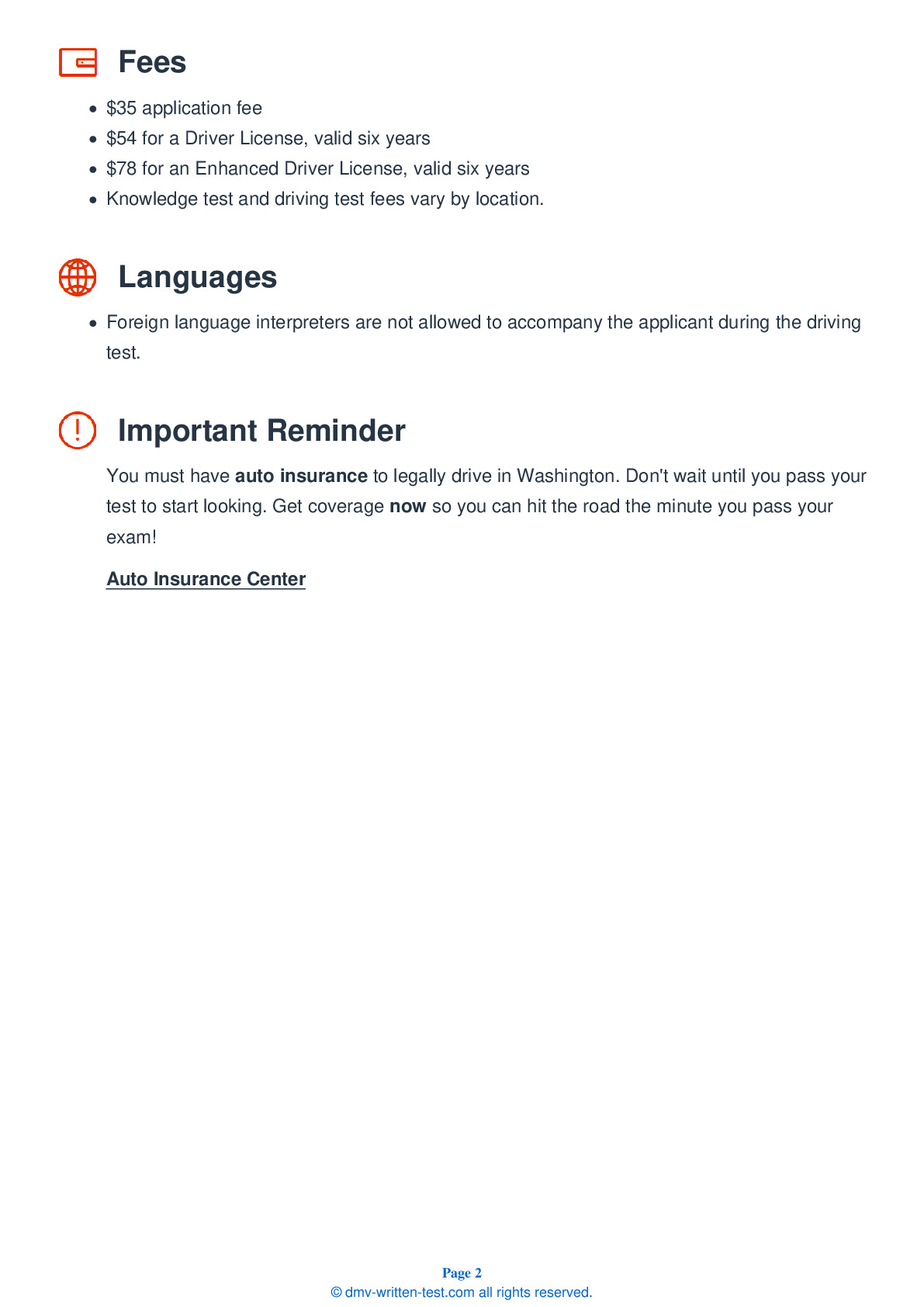2025 Washington Permit Test 17
The following questions are from real DMV written tests. These are some of the actual permit questions you will face in Washington. Each permit practice test question has three answer choices. Select one answer for each question and select "grade this section." You can find this button at the bottom of the drivers license quiz. For a complete list of questions and answers for Washington please visit https://cheat-sheets.dmv-written-test.com/en/washington/car.
Number of Tests
Number of Question
Passing Score
19. Always signal when:
Explanation
Your turn signals should always be used when you make any movement to the left or right. You should use your signal when pulling into traffic from a curbside parking space, moving into a new lane, or passing another vehicle.
20. When you approach a railroad crossing without flashing warning signals or crossing gates, you should:
Explanation
Always be prepared to yield to any oncoming trains before crossing railroad tracks, particularly if there are no lights or gates controlling the crossing. Never start to cross the tracks until there is room for your entire vehicle on the other side of the tracks. Due to the risk of a vehicle stalling, it is not wise to shift gears when crossing railroad tracks.
21. Before entering a roundabout, you must slow down and yield to:
Explanation
When entering a roundabout, you must yield to pedestrians, bicyclists, and vehicles that are already in the roundabout.
22. When you drive through an area where children are playing, you should expect them:
Explanation
You should always reduce your speed and use extra caution when children are in the vicinity. They may fail to understand the danger and may run out in front of you without looking.
23. A good defensive driver:
Explanation
Even the most experienced drivers can be distracted while driving. A defensive driver looks out for the actions of other drivers and anticipates potential problems.
24. When driving at high speeds, always allow enough room to safely stop in emergencies by staying at least:
Explanation
If you are driving at a speed of 30 mph or slower, a following time of two or three seconds may be enough to stop safely in the case of an emergency. However, at higher speeds, it is best to maintain a four-second following time.
25. “Highway hypnosis” is a driving condition that can result from:
Explanation




